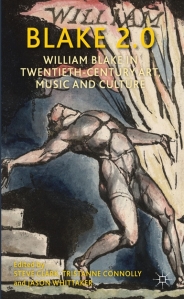As Blake wrote in his Autograph, I am “very much delighted with being in good company” having been asked by Markus Poetzsch and Cassandra Falke to contribute to their absolutely amazing collection, Wild Romanticism, just out this Spring.
My chapter is titled “Human grapes in the wine presses: vegetable life and the violence of cultivation in Blake’s Milton“. It argues that Blake, in one way at least, isn’t quite as wild as you might expect. He values cultivation, both artistic and horticultural. I start with the idea of pruning — constraining, cutting, and suffering to encourage growth — with reference to a legendary grapevine in the Blakes’ own garden in Lambeth. Then I analyze the remarkable amount of “cultivation” and garden imagery in Annotations to Reynolds. Next, the essay moves to Felpham to examine the role of plants in Milton (which has a lot to do with embodiment and apocalypse) and ends up confronting the necessarily indeterminate question of violence and physical pain having a part in redemption.


